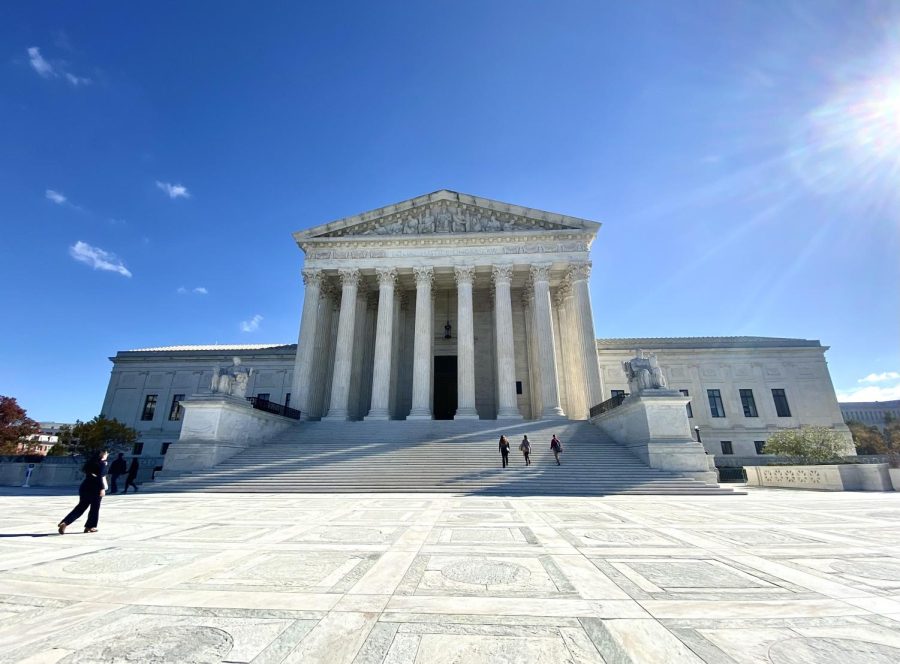As college students with student loan debt await the U.S. Supreme Court’s decision on President Joe Biden’s student loan forgiveness plan, I thought it would be a worthwhile endeavor to take a deep dive into the court’s recent history as well as where it stands right now.
In recent years, the court has made plenty of, quite frankly, terrible decisions.
Just last summer, the court took away the constitutional right to abortion in Dobbs v. Jackson Women’s Health Organization. In short, the conservatives ignored the Ninth Amendment (which seemingly doesn’t exist to the court’s originalists) and court precedent in Roe v. Wade and Planned Parenthood v. Casey to do as the evangelicals have long wished: allow states to completely ban abortion (even in cases of rape) if they wish.
As we prepare for the court’s decision on student loan forgiveness this summer, another bad decision could be in line. In oral arguments, it appears seven justices are set in their decisions. Roberts, Gorsuch, Alito and Thomas appear likely to strike down Biden’s student loan forgiveness plan, while Sotomayor, Kagan and Brown-Jackson appear likely to uphold it.
The two wildcards are both Trump-appointed justices: Brett Kavanaugh and Amy Coney Barrett. Kavanaugh is sympathetic to the Biden Administration’s interpretation of the word “waive” in the HEROES Act, while Barrett questioned whether any of the suing parties have legal standing in the case. If just one of the wildcards joins with four of the court’s conservatives, the Biden Administration’s student loan forgiveness plan will be struck down.
In case there is any debate where I stand on the legality of Biden’s student loan forgiveness plan, let me be very clear: Biden has the authority to cancel student loan debt. Congress gave him that authority under both the HEROES Act of 2003 and the Higher Education Act of 1965. Further, I have a tough time believing any of the suing parties have legal standing in their cases.
Regardless of the court’s decision in this case, the Supreme Court stinks. I was considering sugarcoating this column, but I just couldn’t bring myself to do it. Increasingly so, it’s another political body that only cares about the elites that put them in their positions.
And I’m not sure the court is fixable. But, I have three ideas to try and fix our increasingly broken Supreme Court.
Term limits
If the court is going to be politically ideological — and it already is — then we might as well make it so that it at least reflects the political ideology of the people. We could do this by having a justice replaced every two years, with each new justice serving for an 18-year term.
This would ensure the court reflects the will of the people. Why does Donald Trump, a one-term president that lost the popular vote, get to nominate three justices to the bench for the rest of their lives, while Barack Obama, a president who won the popular vote twice, only get to nominate two?
Ethics code
The fact that the Supreme Court is not held to an ethics code baffles me. Why aren’t the nine justices on the court held to the same ethical standards as Congress or any other federal judge? Why can Clarence Thomas sit on cases concerning the events of Jan. 6, 2021, despite the fact that his own wife has some connections to that day’s events?
It doesn’t make any sense, and I hope Congress passes the Supreme Court Ethics, Recusal and Transparency Act of 2022, which would create a code of conduct not only for the nine justices, but also for their staffers.
Balance the court
Some critics of the current Supreme Court have called for Democrats to add four seats to the Supreme Court and “pack” the court with four liberal justices, flipping the court from a 6-3 conservative majority to a 7-6 liberal majority. This approach is impossible right now because Republicans control the House, but it is a bad idea regardless; Republicans would likely just add more conservative justices to the court in future years.
Instead of further politicizing the court, we should aim to depoliticize the court. How can we do this?
We could balance the court by doing what Daniel Epps and Ganesh Sitaraman outlined in the Yale Law Journal. They call it the “Balanced Bench.” In short, the court would permanently have 15 justices: five Democrats, five Republicans and five that are picked unanimously by the other 10. The logistics get muddy, but the goal is this would create a more non-partisan and moderate court, two attributes the current Supreme Court is certainly lacking.
The Supreme Court is broken. Its justices are increasingly partisan and predictable, and only 40% of Americans approve of it. Can these proposals fix the broken court? I don’t know, but they’re worth a shot.






















